Australian cities and waterways: Sydney and Sydney Harbour
Bill Dennison ·Sydney, Australia's largest city, is built around Sydney Harbour. The original European visit to the area by Captain James Cook on the Endeavour was when he anchored just south of Sydney in Botany Bay in 1770. Cook named it Botany Bay in honor of his botanists on board, led by Sir Joseph Banks. Botany Bay is now where Sydney airport is located and is fairly industrialized. As Cook sailed north from Botany Bay he viewed the mouth of the harbor which he named Port Jackson after a Lord in the British Admiralty.
Sydney Harbour is a better natural harbor than Botany Bay. In 1788, the 'First Fleet' of colonists and convicts first visited Botany Bay but quickly relocated to the area within Sydney Harbour known as "The Rocks". This historic area is now at the base of the iconic Sydney Harbour Bridge and looks out onto the Sydney Opera House. Circular Quay, the main ferry terminal, is between "The Rocks" and Sydney Opera House. Due to the juxtaposition of these iconic features, Sydney Opera House, Sydney Harbour Bridge, and Sydney Harbour ferries on their way to Circular Quay, this well photographed region is the heart of Sydney.
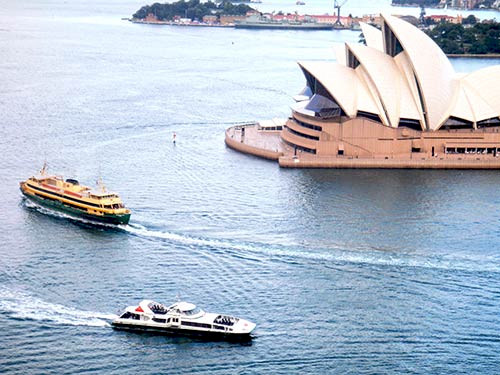
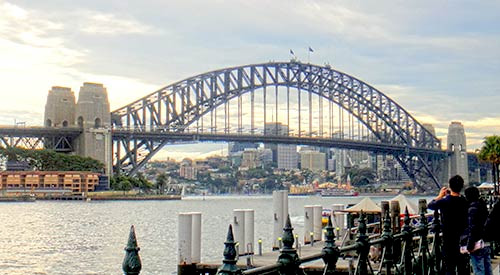
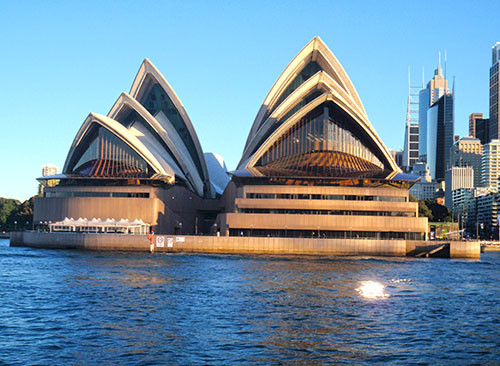
Sydney is named after Thomas Townshend, Lord Sydney, the British Home Secretary who established the charter that Arthur Phillip used to establish the first British colony in Australia in 1788. It is the capital of New South Wales and hosted the 2000 Summer Olympic Games. The water in the harbor is amazingly clear, with seagrasses, kelp (Ecklonia) and other macroalgae visible from the shoreline. The juxtaposition of a major city with clear water is quite unique.
Sydney Harbour does suffer from bacterial contamination following rainfall and some of the industrialized upper reaches have contaminated sediments. The sewage treatment outfalls were moved to relatively far offshore due to beach contamination issues, and the plumes from these outfalls do not impact the shoreline. The biggest unresolved problem facing Sydney and many large cities is stormwater runoff. The animated film 'Finding Nemo' has scenes set above and underwater in Sydney Harbour.
There are some nice trails around Sydney Harbour and many spectacular vistas overlooking the harbor. Both North Heads and South Heads at the mouth of Sydney Harbour offer wonderful views. There are regular tours to the top of the Sydney Harbour Bridge, and you can climb steps within one of the large pylons as well. Sydney has a observation tower in the city and the Taronga Park Zoo has fantastic views.
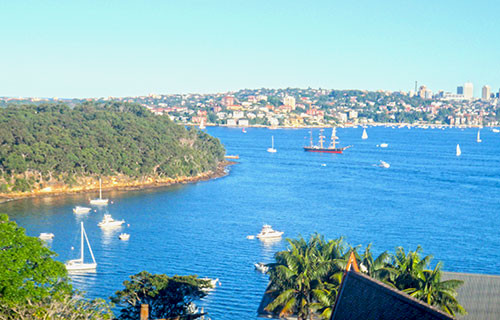
The ferry system in Sydney Harbour allows people to experience the waterways on a regular basis. The combination of fast catamarans and the classic green hulled ferries go both upriver and out to Manly, where you can take a short walk across the peninsula to the ocean beach. There are two annual events which bring many people to the harbor. One is on 'Boxing Day', December 26, when the Sydney to Hobart yacht race begins. Sydney Harbour is teeming with racing yachts as well as spectator boats. Another large event is the New Year's fireworks off the Sydney Harbour Bridge.
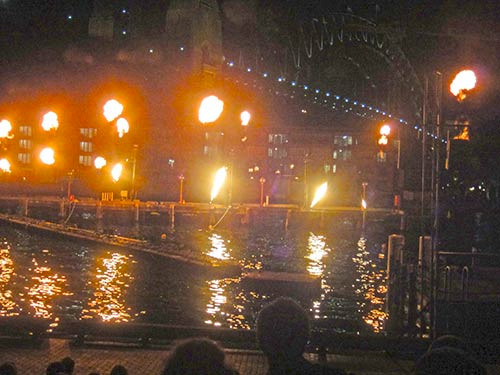
We visited Sydney during an amazing light show that lit up different buildings and had jets of fire set to music. The Sydney Opera House was lit up with a changing patterns of colors and shapes, with the light source beamed across the harbor from 'The Rocks' area. Thousands of people turned up to watch the show which ran for several weeks. The Customs House just behind Circular Quay was another focal point with the lights creating false facades which were 'painted' across the building and made to 'crumble' as well. There were interactive lights in trees, silhouettes of people projected onto buildings and an always changing set of shapes and colors on the buildings visible from Circular Quay.
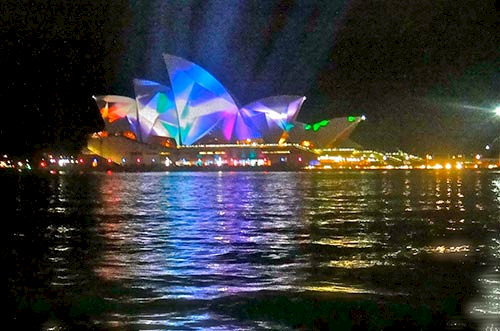
It is hard to image Sydney without Sydney Harbour and this waterway is not just the life blood of Sydney but reflects on all of Australia. The health of this body of water will need good stewardship to insure that it stays healthy.
About the author
Bill Dennison

Dr. Bill Dennison is a Professor of Marine Science and Vice President for Science Application at the University of Maryland Center for Environmental Science.

